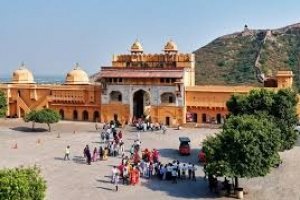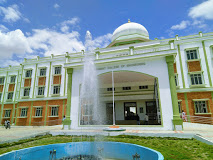
From iron works in Burkina Faso that date back nearly three millenniums, to the fortified and planned city of Jaipur in India, to the Guggenheim Museum in Manhattan, Unesco has added a broad array of cultural and natural marvels to its World Heritage List.
To be included on the list, a site must meet at least one of 10 criteria, like being a landmark of human history or culture, an ecological wonder, or “a masterpiece of human creative genius.” Unesco’s World Heritage Committee considered 35 nominations this year and accepted 29 from around the world, some of them composed of multiple sites, covering the full range of categories.That is “a relatively high but not unusual number,” said Mechtild Rössler, the director of the organization’s World Heritage Center in Paris.
Bahrain’s Dilmun Burial Mounds:
UNESCO World Heritage Committee (WHC) added Bahrain’s Dilmun Burial Mounds to its World Heritage List praising the tombs for their globally unique characteristics.
The burial grounds include 21 archaeological sites in the western part of the island It is built between 2050 and 1750 BC (Before Christ)
They are the evidence of the early Dilmun civilisation.
Megalithic Jar Sites in Xiengkhouang- Plain of Jars:
Megalithic Jar Sites in Xieng Khouang- Plain of Jars from Lao People’s Democratic Republic were added into the UNESCO World Heritage List.
The Plain of Jars, located on a plateau in central Laos
It gets its name from more than 2,100 tubular-shaped megalithic stone jars used for funerary practices in the Iron Age.
This serial site of 15 components contains large carved stone jars, stone discs, secondary burials, tombstones, quarries and funerary objects dating from 500 BCE to 500 CE.
They are evidence of the Iron Age civilization.
China’s Archaeological Ruins of Liangzhu City:
The Archaeological Ruins of Liangzhu City in Hangzhou, Zhejiang province, which dates back 5,300 years were added into the UNESCO World Heritage List.
They reveal an early regional state with a unified belief system based on rice cultivation in Late Neolithic China.
It is composed of four areas namely the Area of Yaoshan Site, the Area of High-dam at the Mouth of the Valley, an Area of Low-dam on the Plain and the Area of City Site.
Italy’s Prosecco Hills:
Italy’s Prosecco hills northeast of Venice cultivated for centuries were added into the UNESCO World Heritage List.
It is characterised by ‘hogback’ hills, ciglioni – small plots of vines on narrow grassy terraces, forests, small villages and farmland.
The grapes produced from the famous prosecco sparkling wine are grown at Conegliano and Valdobbiadene hills.
Indonesia’s Ombilin Coal Mining Heritage of Sawahlunto:
The Ombilin coal mine in Sawahlunto, West Sumatra, the “oldest coal mining town in Southeast Asia” added into the UNESCO World Heritage List.
It comprises the mining site and company town, coal storage facilities at the port of Emmahaven.
It was developed by the Netherlands colonial government from the beginning of the 20th century.
Mozu-Furuichi Kofun Group: Mounded Tombs of Ancient Japan:
It is located on a plateau above the Osaka Plain, Japan.
It includes 49 kofuns (old mounds in Japanese).
This kofun selected from a total of 160,000 in Japan and form the richest material representation of the Kofun period, from the 3rd to the 6th century CE (Common Era).
They demonstrate the differences in social classes and reflect a highly sophisticated funerary system.





